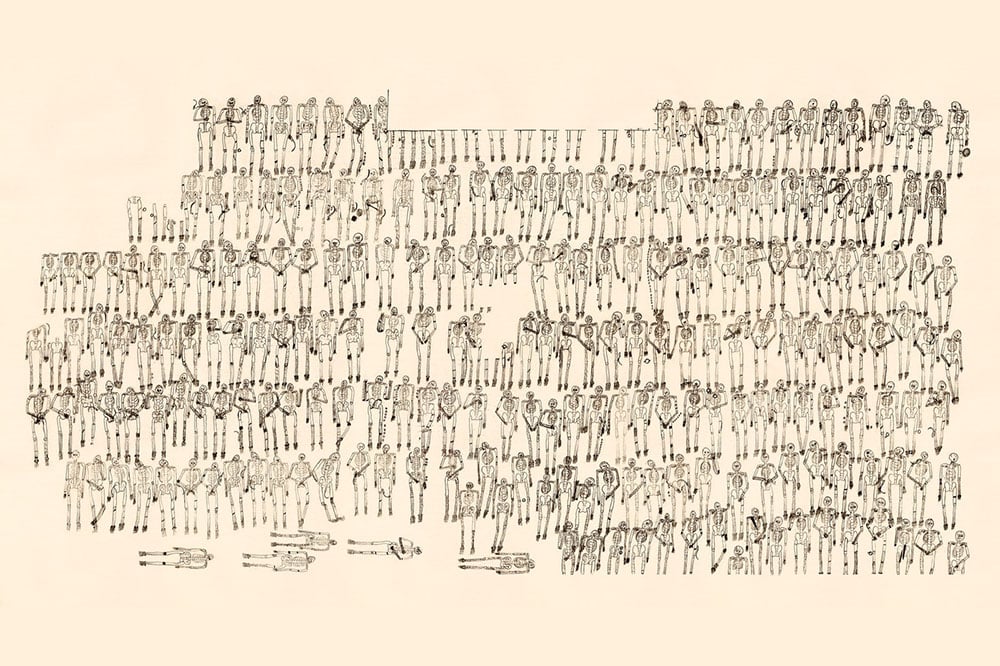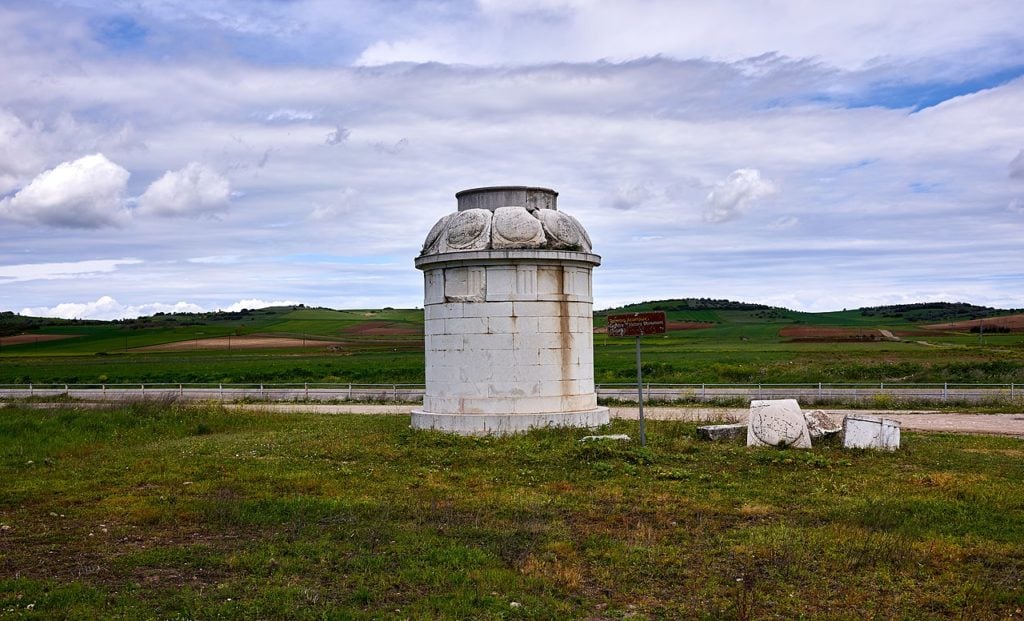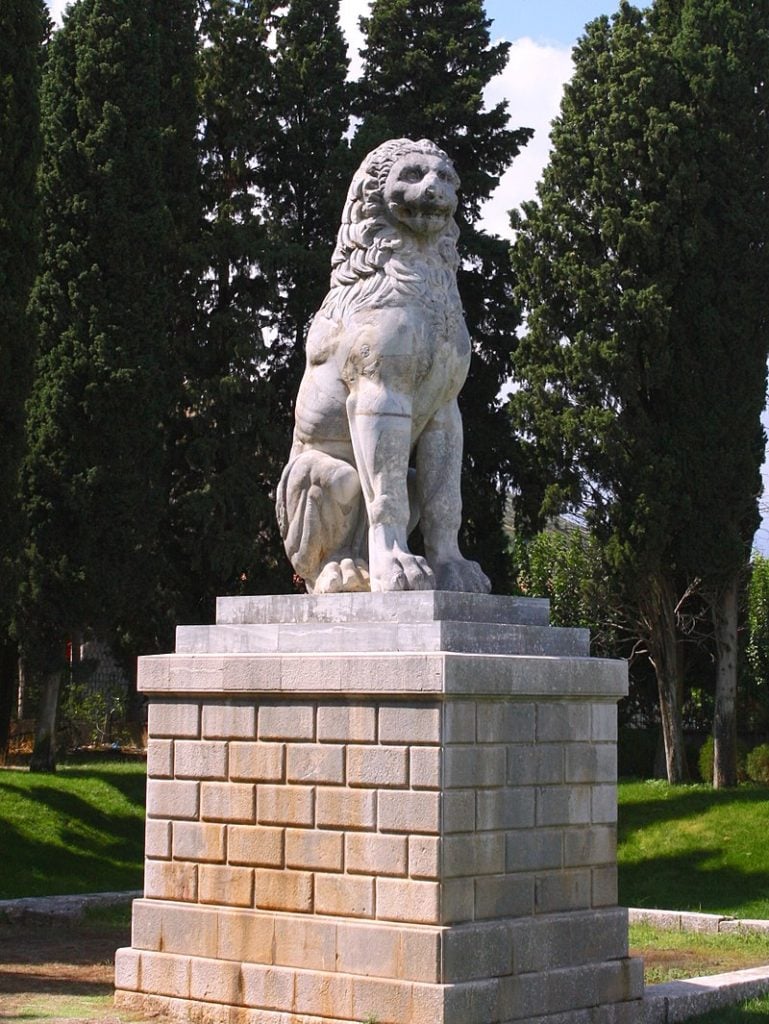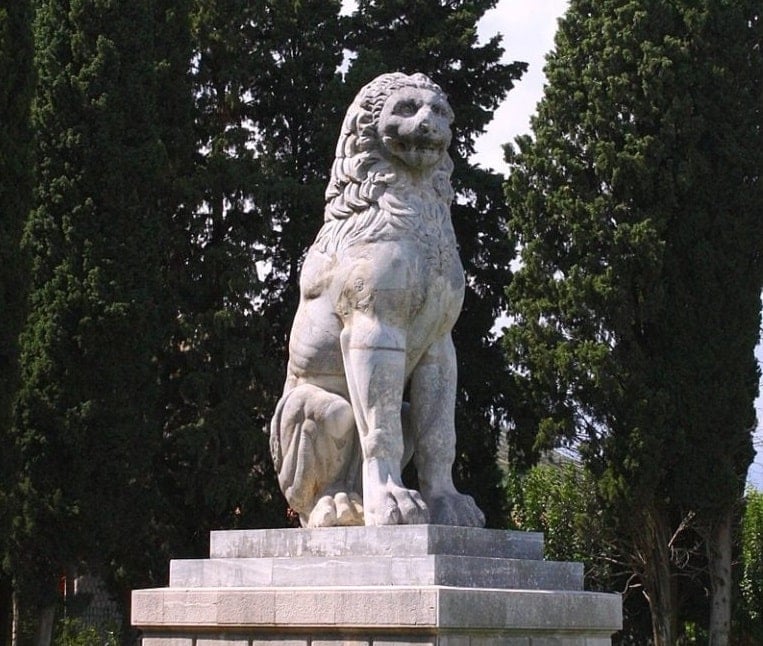
Comprising a hundred and fifty male couples, Thebes’ Sacred Band, known as ancient Greece’s army of lovers, went undefeated in war for years until it was completely wiped out in a battle in 338 B.C., marking the end of the Classical Greek era.
Incredibly, it was only in the nineteenth century that the mass grave of the men was found —and even then, the discovery was made only by chance.

Formed as a troop of select soldiers, it consisted of 150 pairs of male lovers who formed the elite force of the Theban Army in the 4th century B.C., which ended Spartan domination of the area.
Its rise to fame began with its crucial role in the Battle of Leuctra in 371 BC.
The earliest surviving record of the Sacred Band by that name was in 324 B.C., in the oration “Against Demosthenes” by the Athenian logographer Dinarchus. He mentions the Sacred Band as being led by a general called Pelopidas.
Sacred Band helped defeat Spartans at Battle of Leuctra
Alongside Epaminondas, who commanded the army of Thebes (Boeotia), they were responsible for the defeat of the Spartans at the decisive Battle of Leuctra.
Plutarch (46–120 A.D.), a native of the village of Chaeronea, the site of the Sacred Band’s ultimate defeat, is the source of the most substantial surviving account of the army of lovers.
He stated that the Sacred Band was originally formed by the boeotarch Gorgidas, shortly after the expulsion of the Spartan garrison occupying the Theban citadel of Cadmea.
Xenophon’s Socrates, in his “Symposium,” disapprovingly mentions the practice of placing lovers beside each other in battle in the city-states of Thebes and Elis, arguing that while the practice was acceptable to them, it was shameful for Athenians.
Both Plato and Xenophon were Athenians. According to the British classical scholar Sir Kenneth Dover, this was a clear allusion to the Sacred Band, reflecting Xenophon’s contemporary—albeit anachronistic—awareness of the Theban practice, as the dramatic date of the work itself is circa 421 B.C..
However, it is the speech of the character Phaedrus in Plato’s Symposium, referring to an “army of lovers,” that is most famously connected with the Sacred Band; even though it does not technically refer to the unit since the army referred to is hypothetical, many historians believe that he was actually quite aware of the Sacred Band in his time.
Army would “conquer all mankind”
In this work, a dialogue about love, one of the characters says that an army made up of male lovers would “conquer all mankind” because they would never show cowardice or act dishonorably in front of their beloved.
According to Plutarch, the 300 hand-picked men were chosen by Gorgidas purely for their fighting ability and merit—regardless of social class. The Sacred Band was composed of 150 pairs of lovers consisting of an older erastês (ἐραστής, “lover”) and a younger erômenos (ἐρώμενος, “beloved”).
Athenaeus of Naucratis also records the Sacred Band as being composed of “lovers and their favorites, thus indicating the dignity of the god Eros in that they embrace a glorious death in preference to a dishonorable and reprehensible life.”
Polyaenus, a military tactician, describes the Sacred Band as being composed of men “devoted to each other by mutual obligations of love.”
Plutarch claims that the term “sacred” was used to denote the military unit because of the exchange of sacred vows between lover and beloved at the shrine of Iolaus (one of the lovers of Heracles) at Thebes in ancient Greece.

In June, 1818, during a visit to central Greece, a young English architect named George Ledwell Taylor went out riding with some friends to explore the ruins of an ancient town called Chaeronea in Central Greece.
As Taylor neared the destination, his horse stumbled upon what was originally thought to be a rock but turned out to be part of a sculpture. After Taylor and his friends dug into the earth around the sculpture, they eventually revealed the head of an animal nearly six feet high—as Taylor stated later, a “colossal head of the Lion.”
He used the phrase “the Lion” quite purposefully since an ancient lion called the Lion of Chareronea had been mentioned by ancient writers.
Lion of Chaeronea, mass grave discovered after more than 2,100 years
After having been completely lost to history, Taylor knew at that point that he had discovered the treasure.
A recent article in The New Yorker magazine by Daniel Mendelsohn, the editor-at-large of the New York Review of Books, states that the Englishman had already been reading a book called “The Description of Greece,” by Pausanias, at the time of the discovery.
Pausanias, a geographer who lived in the second century A.D., wrote that the gigantic figure of the sitting lion had been erected in ancient Greece to commemorate a remarkable military unit that had been decimated near that spot.
Pausanias had speculated that the proud animal represented “the spirit of the men.”
Indeed, Tyler had literally stumbled upon the monument to the Sacred Band, who had all been killed to a man more than 2,100 years earlier.
Comprising three hundred warriors from the city of Thebes, it was among the most fearsome fighting forces in Greece, undefeated until it was wiped out at the Battle of Chaeronea, in 338 B.C.—an engagement during which Philip of Macedon and his son, the future Alexander the Great, crushed a coalition of Greek city-states led by Athens and Thebes.
Scholars see the battle of Chaeronea as the death knell of the Classical Era of Greek history.
Sixty years after Taylor’s remarkable discovery, further archaeological excavations revealed a large rectangular burial site near the Lion. The greatly-detailed drawings that were made at the site show seven rows of skeletons, all laid out with great care, numbering two hundred and fifty-four men.
A book written by classicist James Romm called “The Sacred Band,” is a must-read for anyone interested in the history of these doomed men and their miraculous discovery after the passage of millennia.
Published by Scribner, the book features the work of illustrator Markley Boyer, who collated the original drawings, which show black marks to indicate the wounds the warriors had suffered, made at the gravesite to reconstruct the entire mass grave of the Sacred Band.
